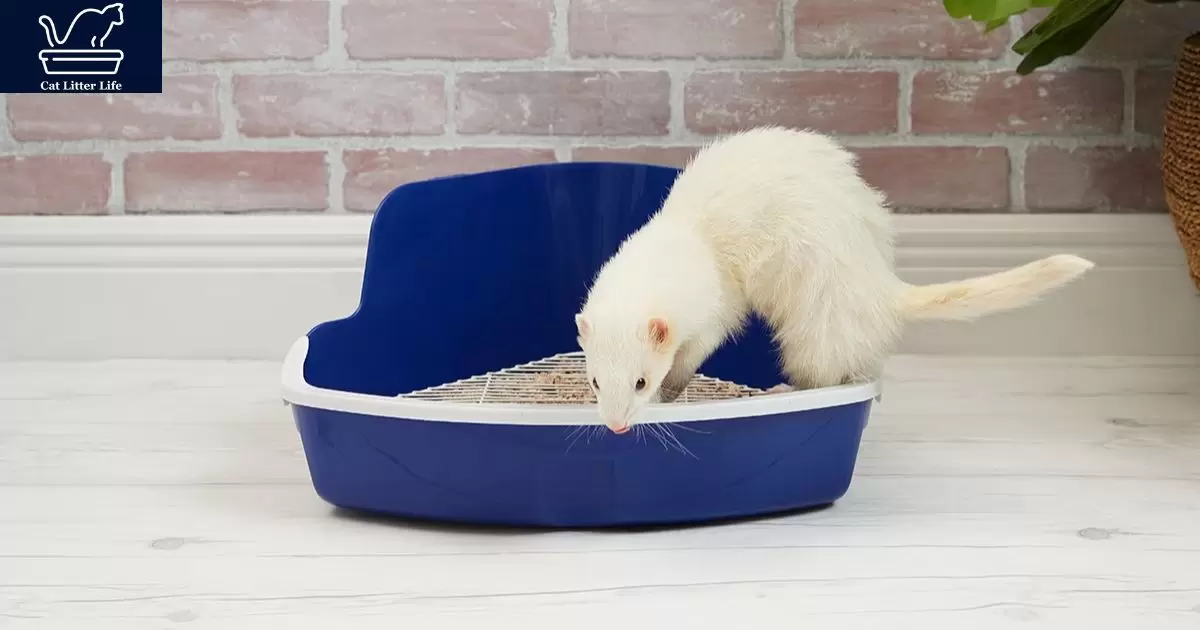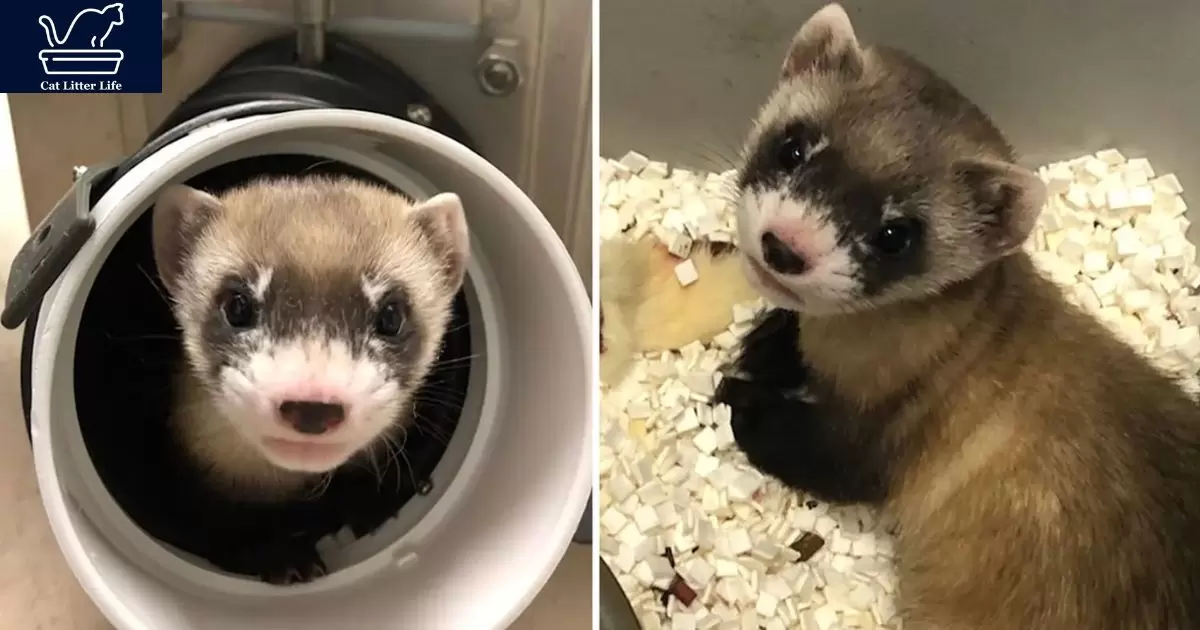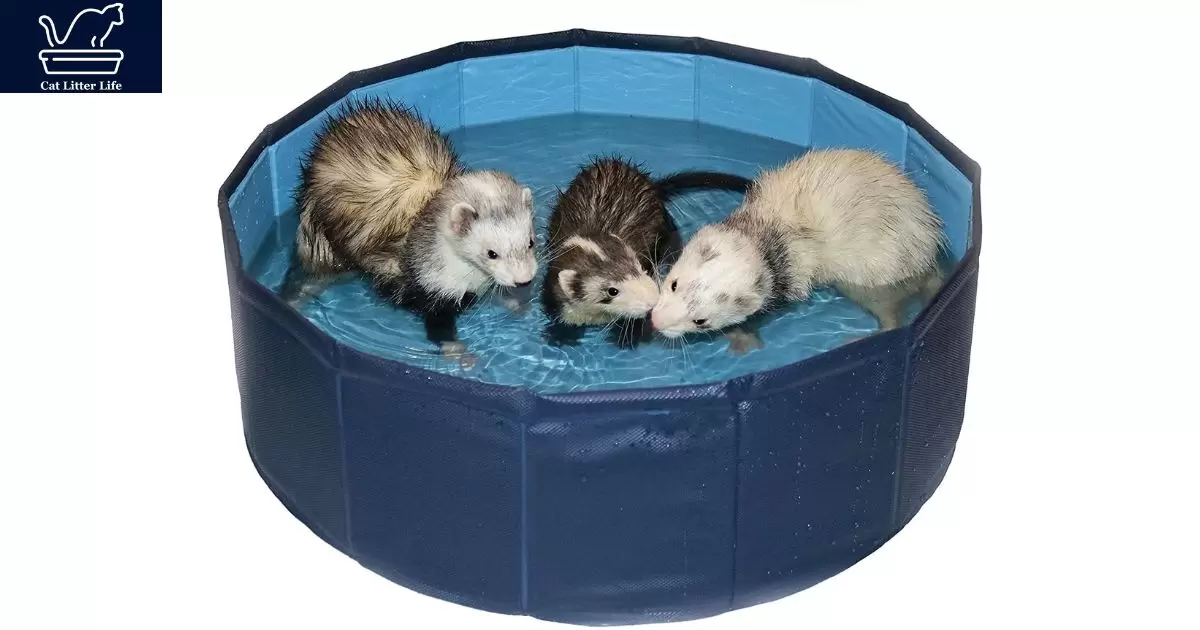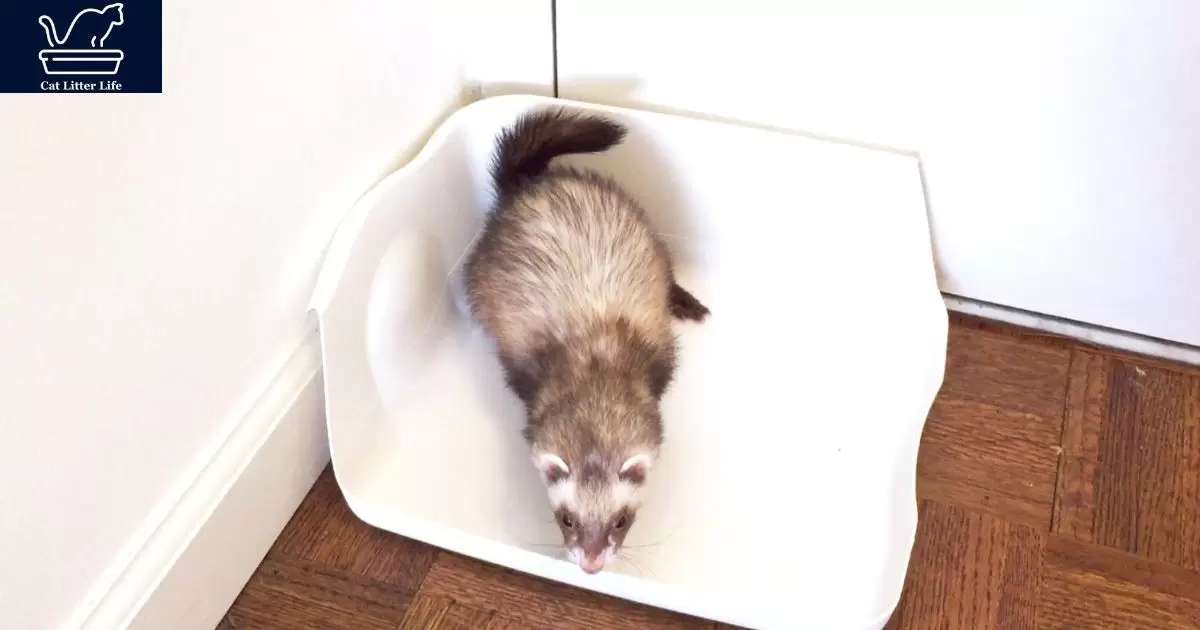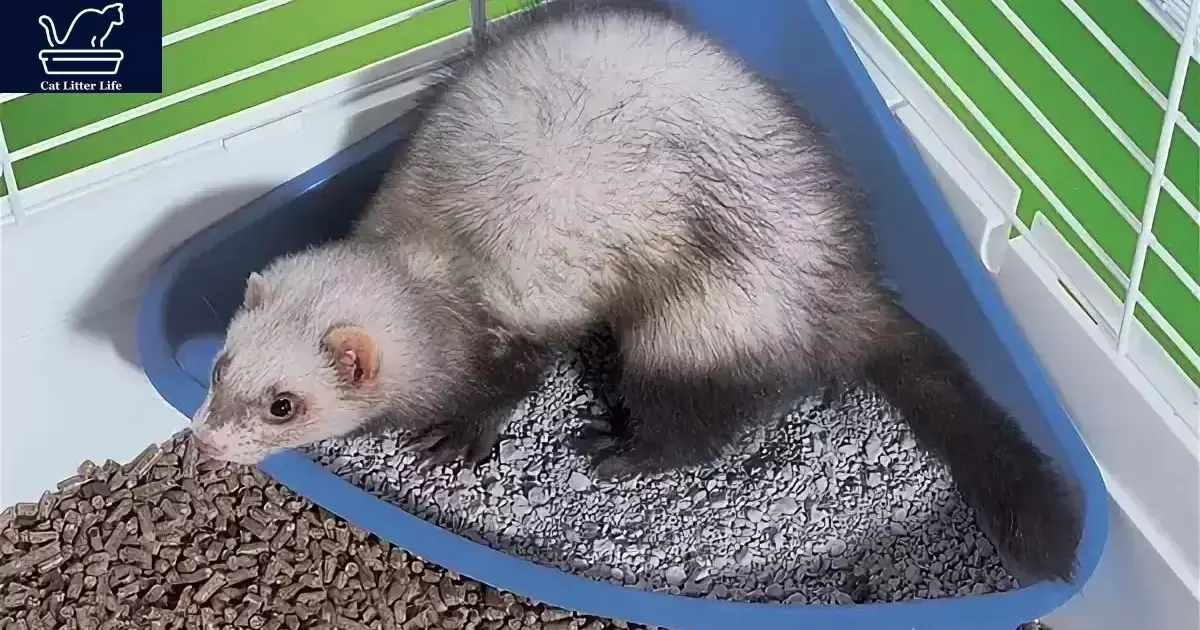Cat clutter can be a lower-priced and handy choice for ferret owners, even though care needs to be taken in selecting the best product. Ferrets have touchy respiratory structures, so litters with low dust are best. Large pellet litters avoid ingestion risks. Biodegradable, non-clay alternatives are to be had for eco-friendly disposal. Overall, with some precautions, cat muddles can paintings for ferrets.
Can you use cat litter for ferrets? This is a commonplace query for new ferret proprietors. The quick solution is yes, but the form of litter topics. Low-dust, pellet litters are best to avoid respiratory irritation. Scented litter should also be avoided, as ferrets have a keen sense of smell. With the right litter, cat pan training can work for ferrets.
Cat litter can substitute for commercial ferret litter in a pinch. Look for a pellet litter without perfumes or clay. Paper-based litters are also an option. Scoop daily and change completely every few days. Proper litter selection helps ferrets stay healthy and makes cleaning their space easier. With care, cat litter can suit ferrets’ needs.
Key Takeaways: Can you use cat litter for ferrets?
- Ferrets have more digestive systems than cats, and their clutter requirements are specific.
- Regular cat litter, especially clumping clay litters, should not be used for ferrets as they can cause intestinal blockages and other health troubles if ingested.
- Ferrets have a propensity to dig and burrow in their muddle, increasing the danger of unintentional ingestion.
- Recommended litters for ferrets include pellet-based litter crafted from recycled paper or compressed timber, which are less probably to be ingested and cause blockages.
- Some puppy stores additionally promote ferret-unique litters designed for their precise wishes and conduct.
- When deciding on a muddle for ferrets, prioritize protection, absorbency, and scent manipulation whilst fending off any merchandise that would be potentially dangerous if ingested.
- Regularly cleaning and converting the clutter is crucial to maintain a healthy environment for ferrets.
Dangers of Dust for Ferrets
Ferrets have very sensitive respiratory systems. Dust can accumulate in their lungs and lead to chronic sneezing or worse respiratory infections. Cat litters made of very fine particles or lightweight clay can release dust into the air when ferrets dig and play in them. Exposure over time can cause lung inflammation and illness.
Multi-cat litter tends to be very dusty and is not a good choice. Instead, look for cat litter made of larger pellets, paper-based materials, or plant materials like wood and wheat. These create minimal airborne dust. Some even have large bean or nutshell pieces that are too heavy to become airborne.
Avoid Clumping Clay Litters
Many traditional clay-clumping cat litter is hazardous for curious ferrets who may ingest them. The clumping agents used can expand inside a ferret’s stomach or intestines, causing blockages. Instead of clay, are seeking out plant-based cat litter crafted from substances like recycled paper, timber pulp, or wheat.
Look for natural litter made from vegetable materials instead of clays. Some pellet-style litters made from grass, wood shavings, walnut shells, or other organic materials are also safe, low-dust choices. They break down naturally if ingested. Steer clear of clumping clay litters specifically marketed for their adherence properties.
Fragrance-Free is Best
Ferrets have a completely strong feel of odor, so heavily scented litters may be off-putting or even nauseating to them. Strong perfumes and deodorizers in a muddle can discourage ferrets from the use of the container. Seek out fragrance-free, unscented cat litter instead. Simple paper, wood, wheat, or pellet-style litters are available without added fragrances.
Avoid litters marketed as having long-lasting scents or powerful odor blockers. Go for natural, minimal ingredient litters instead. Ferrets are sensitive enough to detect subtle natural scents in wood, paper, or plant-based litter. Masking those with artificial fragrances isn’t necessary.
Popular Safe Cat Litters for Ferrets
With those key factors in mind, here are some popular cat litter options that can work well for ferrets too:
Paper Litters
- Yesterday’s News, Unscented paper pellets made from recycled paper
- Feline Pine, Pellets made from recycled pine wood
- Carefresh, Fluffy paper bedding material with minimal dust
Natural Plant-Based Litters
- World’s Best Cat Litter, Corn and wood pulp blend
- Swheat Scoop, Wheat-based clumping litter
- Tidy Cats Free and Clean, Unscented paper-based litter
Pellet Litters
- Feline Pine Original, Pine wood pellet litter
- sWheat Scoop Natural, Non-clumping wheat litter
- Naturally Fresh Walnut-Based Quick-Clumping Litter, Walnut shell pellets
Litter Box Tips for Ferrets
Setting up a proper litter area for ferrets involves more than just the right litter. Here are some additional tips:
- Use a low-sided litter pan that allows easy entry and exit
- Provide multiple litter boxes in different areas
- Scoop waste out of boxes daily to keep them clean
- Change litter completely each week to control odor
- Place boxes away from food, water, and sleeping areas
- Use washable mats or pads under boxes to catch stray litter
Ferrets tend to urinate in corners, so square litter boxes work better than round ones. Provide at least one box per ferret, in multiple areas of the home. This gives them options and reduces accidents.
Transitioning Ferrets to New Litter
When changing your ferret over to a new cat litter, do so gradually. Start by mixing a small amount of the new litter into their current litter. Over a week or two, slowly increase the ratio of new to old. This gives them time to become accustomed to a new scent or texture. An abrupt change can be confusing and stressful.
Ease ferrets into a litter transition to avoid resistance or refusal. Be certain to display your ferret’s respiration and watch for signs of respiratory irritation while attempting a brand-new product. Discontinue use if any wheezing, sneezing, or distress is seen. Find an alternative that does not cause irritation or allergic response.
Can You Use Clay Cat Litter For Ferrets?
Standard clay cat litter isn’t recommended for ferrets. The fine, dusty debris can cause breathing issues if inhaled. The clumping variety poses impaction risks if eaten. Even non-clumping clay litter contains silica dust when poured and traps waste odors.
There are now so many better alternatives like paper, wood, wheat, and plant-based litter that clay litter is an unnecessary risk. Any potential cost savings of using clay is outweighed by the health risks. Stick to low-dust, non-clumping paper, wood, plant, or pellet litters for your ferret’s safety.
Homemade Cat Litter Options for Ferrets
Some ferret owners opt to make DIY homemade cat litter to control ingredients and costs. This can work well when done properly.
Paper-Based Recipes
- Rip or shred newspaper, computer paper, or cardboard
- Use a paper shredder to make fine particles
- Mix shredded paper with baking soda as an odor absorber
Wood Stove Pellet Recipes
- Use raw, untreated wood stove pellets
- Crush pellets into a coarse powder or granules
- Add baking soda and/or unscented soap powder
Organic Plant-Based Recipes
- Use wheat bran, oat bran, rice bran, or cornmeal
- Process grains in a blender or food processor
- Add baking soda and/or vinegar powder
When making your litter, avoid perfumed soaps, citrus oils, or any scented additives. Test a small batch first to be sure your ferret does not have an allergic reaction or refuse to use it. Homemade litters may need more frequent changing than commercial brands.
The Bottom Line
Can you use cat litter for ferrets? Yes, with careful selection of a low-dust, non-clumping, unscented product. Avoid fragrances, silica dust, and clumping clays. Choose a pellet, paper, wood, wheat, or plant-based cat litter instead. With the right litter and boxes, ferrets can be happily trained to use cat pan set-ups. Proper litter helps keep your ferret’s respiratory system healthy and makes cleaning easy.
FAQ’s
What type of cat litter is safe for ferrets?
Pellet, paper, wood, wheat, or plant-based litter without dust or clumping clay.
Should you use scented cat litter for ferrets?
No, use fragrance-free, unscented litter instead.
How many litter boxes do ferrets need?
Provide at least one box per ferret, in multiple rooms.
How often should you change ferret litter?
Completely change out the litter each week to control odor.
Can ferrets use clumping clay cat litter?
No, the clumping agents can cause blockages if eaten.
Conclusion
The simple answer is yes, cat litter can work for ferrets in many cases, but it’s crucial to pick the best litter for ferrets. The key is avoiding types with fine dust or clumping clay, which are hazardous. Better options are paper, wood, wheat, or plant-based pellets. They have lower dust and cleaner disposal.
Check for no added perfumes too, as ferrets are sensitive. Introduce new litters gradually to reduce stress. Place multiple corner pans to accommodate their habits. Clean thoroughly each week. With care in selection, cat litter can stand in for ferret-specific brands.
In summary, cat litter can substitute for ferret litter with some precautions. Steer clear of dusty clays that can cause respiratory irritation. Opt for pellets, paper, wood, or natural wheat litter instead. They reduce mess and odors. Ensure any new product is fragrance-free and non-clumping too. Set up corner boxes and scoop daily. With the right litter choice and setup, cat pan training can work for pet ferrets.
